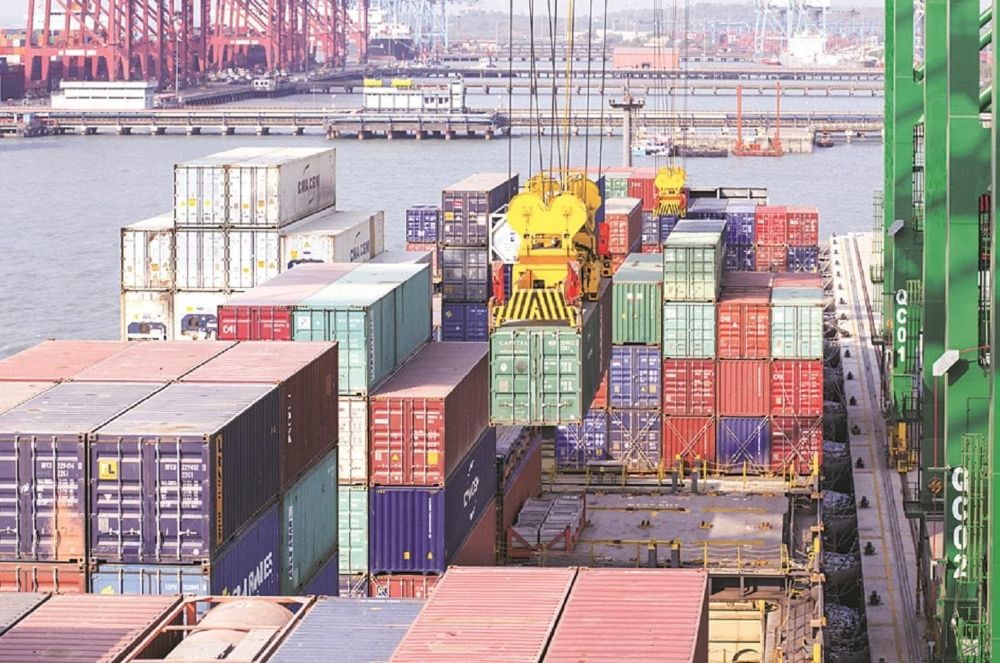But output of eight core infrastructure sectors dropped by 2.6 per cent in November
Our Bureau
New Delhi
Equity benchmark indices began the new calendar year with a positive tone as investors hoped for progress on Covid-19 vaccines globally amid signs of a nascent economic recovery in the country.
The BSE S&P Sensex closed 118 points or 0.25 per cent higher at 47,869 while the Nifty 50 edged higher by 37 points or 0.26 per cent to 14,019. Except for Nifty private bank and financial services, all sectoral indices at the National Stock Exchange were in the green zone with Nifty PSU bank moving up by 3.2 per cent, auto and IT by 0.8 per cent, and FMCG by 0.6 per cent.
Among stocks, Adani Ports was the top gainer by moving up 4.4 per cent to Rs 505 per share. Mahindra & Mahindra gained by 1.5 per cent to Rs 731.80 per share after called off talks with Ford for a joint venture. Punjab National Bank advanced by 5.3 per cent, State Bank of India by 1.5 per cent, Tata Consultancy Services by 2.4 per cent and Tata Motors by 1.4 per cent.
Meanwhile, Gross revenue on account of Goods and Services Tax (GST) crossed Rs 1.15 lakh crore in December, up 12 per cent in the year-ago period, the government said on Friday. Since the introduction of GST, it is the first time that they have crossed Rs 1.15 lakh crore. The highest GST collection till now was Rs 1.13 lakh crore in April 2019. Of the Rs 115,174 crore in December 2020, the Central GST was Rs 21,365 crore, State GST Rs 27,804 crore and Integrated GST Rs 57,426 crore (including Rs 27,050 crore collected on imports) and cess Rs 8,579 crore (including Rs 971 crore collected on imports).
The total number of GSTR 3B returns filed for the month of November up to December 31 is Rs 87 lakh, according to a statement issued by the Ministry of Finance. The government settled Rs 23,276 crore to CGST and Rs 17,681 crore to SGST from IGST as regular settlement. The total revenue earned by Central government and state governments after regular settlement in December is Rs 44,641 crore for CGST and Rs 45,485 crore for the SGST.
“This is the highest growth in monthly revenues since last 21 months,” said the statement. The December 2020 revenues are significantly higher than last month’s revenues of Rs 104,963 crore.
“It has been due to combined effect of the rapid economic recovery post-pandemic and the nationwide drive against GST evaders and fake bills along with many systemic changes introduced recently, which have led to improved compliance.”
This is the third month in a row in current financial year after the economy has been showing signs or recovery post-pandemic that the GST revenues have been more than Rs 1 lakh crore.
The average growth in GST revenues during the last quarter has been 7.3 per cent as compared to minus 8.2 per cent during the second quarter and minus 41 per cent during the first quarter of financial year.
In a positive mood, equity benchmark indices began the first trading session of year 2021 on a positive note with the possibility of touching new heights. The stocks have surged since November on record inflows from foreign institutional investors, progress on Covid-19 vaccines globally and signs of a nascent economic recovery in the country. At 10:15 am, the BSE S&P Sensex was up by 148 points or 0.31 per cent at 47,899 while the Nifty 50 edged higher by 39 points or 0.28 per cent to 14,020.
Except for Nifty pharma, all sectoral indices at the National Stock Exchange were in the green zone with Nifty PSU bank moving up by 1.6 per cent, auto and IT by 0.5 per cent, and FMCG by 0.3 per cent.
But in a sign of worry, the output of eight core infrastructure sectors dropped by 2.6 per cent in November largely due to decline in production of natural gas, refinery products, steel and cement, government data released on Thursday showed.
This is the ninth month of contraction in a row for the eight core industries. In November 2019, the production of eight core sectors had recorded a growth of 0.7 per cent, data released by the Ministry of Commerce and Industry showed.
This year in November, crude oil, natural gas, refinery products, steel and cement recorded negative growth.
However, the output of crude oil, natural gas, refinery products, steel and cement declined by 4.9 per cent, 9.3 per cent, 4.8 per cent, 4.4 per cent and 7.1 per cent respectively.

























